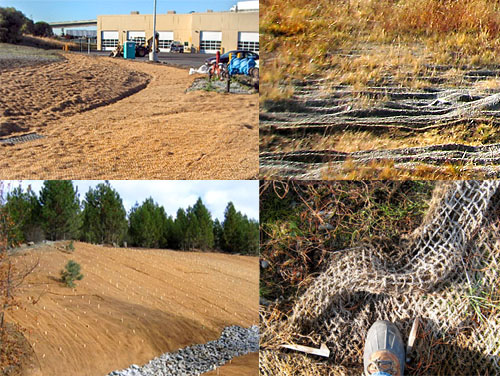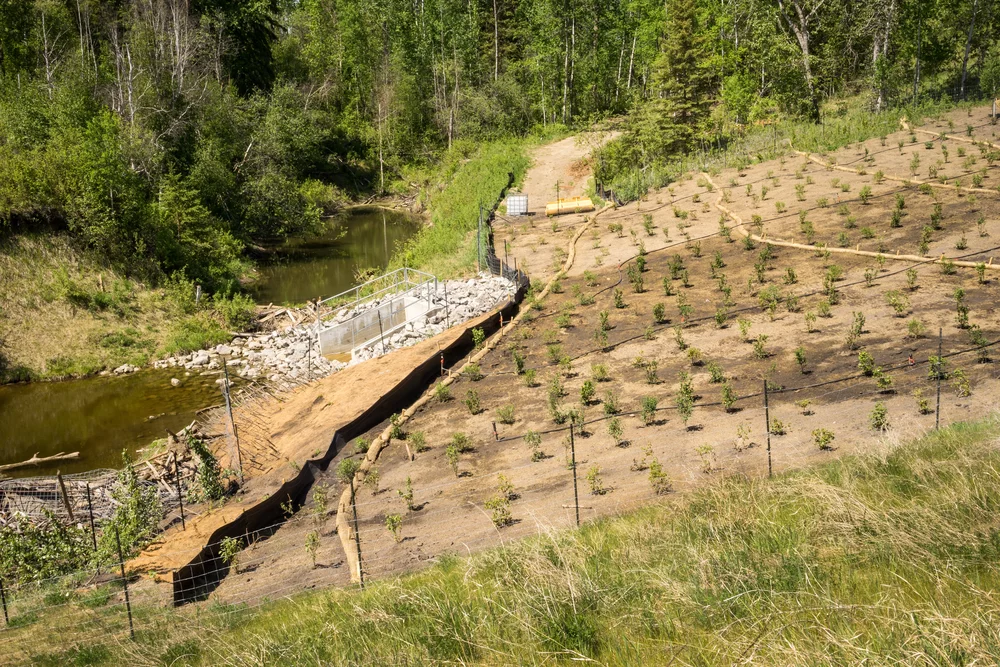Silt Fences: Your First Line of Defense Versus Erosion
Finest Practices for Erosion Control in Building And Construction Projects
Are you functioning on a construction job and concerned concerning erosion control? In this short article, we will certainly direct you through the best practices for protecting against disintegration on your website. Memphis Erosion Control Solutions hydroseeding. Get all set to tackle erosion head-on and make sure the success of your construction project.
5 Vital Disintegration Control Strategies

To efficiently regulate erosion on your building and construction site, you'll require to apply important methods such as slope stablizing and sediment control measures. Slope stablizing is crucial in preventing dirt disintegration on steep slopes. Another reliable technique is the usage of disintegration control coverings or mats, which are placed on the slope and help retain dirt fragments while enabling plants to expand.
Efficient Sediment and Drainage Administration

You can efficiently handle debris and overflow in your building and construction job by applying correct erosion control steps. Debris and overflow administration is critical to avoid erosion and shield the surrounding atmosphere. One efficient procedure is the installation of silt fencings along the boundary of the building and construction site. These fencings aid to have debris and prevent it from getting in nearby water bodies. An additional important practice is the execution of disintegration control blankets or floor coverings. These coverings offer a protective layer on bare soil, minimizing the impact of rainfall and avoiding disintegration. Additionally, the use of sediment basins or debris catches can help to record sediment and stop it from getting in stormwater systems. Normal upkeep of these procedures is important to guarantee their performance throughout the building and construction task. This consists of cleansing and checking debris basins and routinely replacing silt fences and erosion control blankets as required. By carrying out these erosion control measures, you can successfully take care of sediment and overflow in your building and construction job, minimizing the effect on the atmosphere and adhering to governing needs.
Secret Considerations for Incline Stabilization
You need to thoroughly examine the slope's characteristics, such as its angle, drain, and make-up patterns. Look for indicators of erosion, such as revealed origins, splits, or slumping soil.
Once you have determined the unpredictable areas, you can start implementing actions to maintain the slope. One usual technique is making use of retaining walls or terracing to develop a series of level steps, which can aid disperse the weight and prevent further erosion. An additional choice is to plant greenery on the incline, as the origins can assist anchor the soil and control erosion. Additionally, mounting disintegration control blankets or floor coverings can supply immediate security while plant life ends up being established.
It's important to frequently monitor the stabilized inclines to ensure their performance. Watch out for any indications of motion or erosion, and take instant activity if necessary. Routine upkeep, such as checking and repairing any check here damaged steps, is likewise necessary to ensure long-term security.
Ideal Practices for Greenery and Dirt Security
One reliable method to protect plants and soil on inclines is by routinely examining for indications of disintegration and taking immediate activity if necessary. Start by evaluating the slope for any type of signs of erosion, such as revealed roots, bare dirt patches, or sediment buildup at the bottom. Implement disintegration control procedures such as installing erosion control coverings, mulching, or also building keeping wall surfaces if needed.
Carrying Out Correct Drain Equipments
To successfully execute appropriate water drainage systems, it's essential to take into consideration the slope gradient and dirt type. When it concerns taking care of water flow and preventing erosion, comprehending these variables is vital. The slope gradient plays a significant function in determining just how water relocates throughout the land. Steeper inclines can lead to quicker water circulation, raising the risk of erosion and flooding. On the other hand, gentler slopes enable water moved here to move more slowly, reducing erosion potential. By examining the incline gradient, you can make a reliable water drainage system that suits the all-natural water motion.
Dirt kind additionally influences drainage system layout. Various dirt kinds have varying levels of leaks in the structure, influencing exactly how water is taken in and drained pipes. For instance, sandy soils often tend to drain pipes faster due to their coarse texture, while clay dirts have a slower drain price as a result of their compact nature. Understanding the dirt type aids in picking suitable drainage strategies, such as using permeable products or mounting French drains pipes. Furthermore, thinking about the soil characteristics aids avoid waterlogging, which can lead to bad plant growth and damage to structures.
Conclusion
In final thought, when it concerns disintegration control in construction jobs, you need to follow these finest techniques. Implement efficient debris and runoff monitoring techniques to stop air pollution. Consider slope stablizing methods to make sure the security of the website. Protect greenery and dirt by utilizing suitable procedures. Last but not least, establish proper drain systems to take care of water circulation. By complying with these vital methods, you can successfully regulate disintegration and guarantee the success of your construction project.
To effectively control see here disintegration on your building and construction website, you'll need to execute vital methods such as slope stablizing and debris control procedures. Slope stabilization is essential in protecting against dirt disintegration on steep slopes. One more efficient strategy is the usage of erosion control coverings or floor coverings, which are placed on the incline and aid preserve soil fragments while enabling greenery to expand. An additional alternative is to plant plants on the slope, as the origins can assist secure the dirt and control erosion. Implement disintegration control procedures such as installing disintegration control blankets, mulching, or even creating maintaining walls if required.